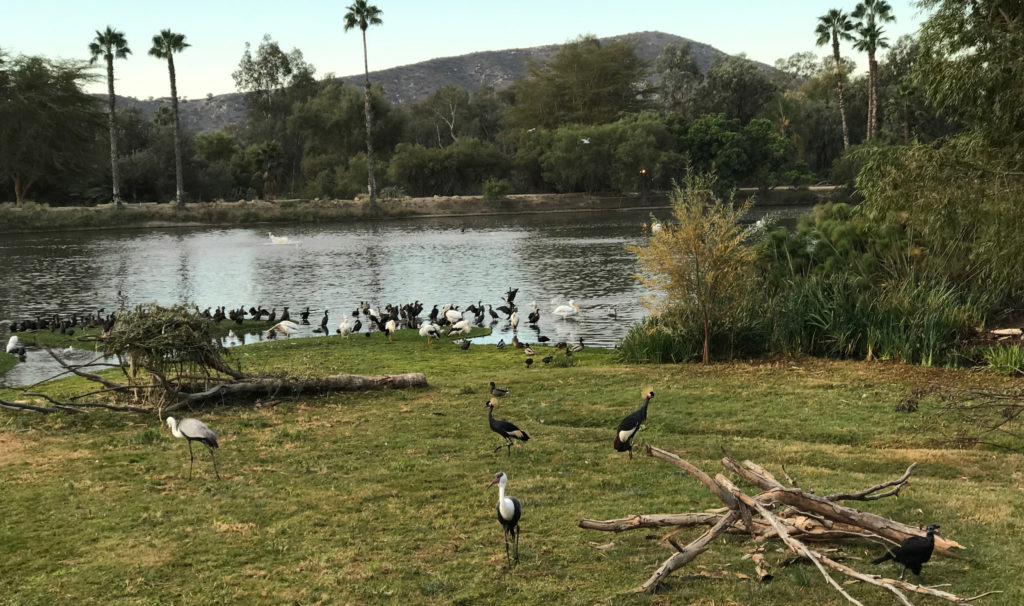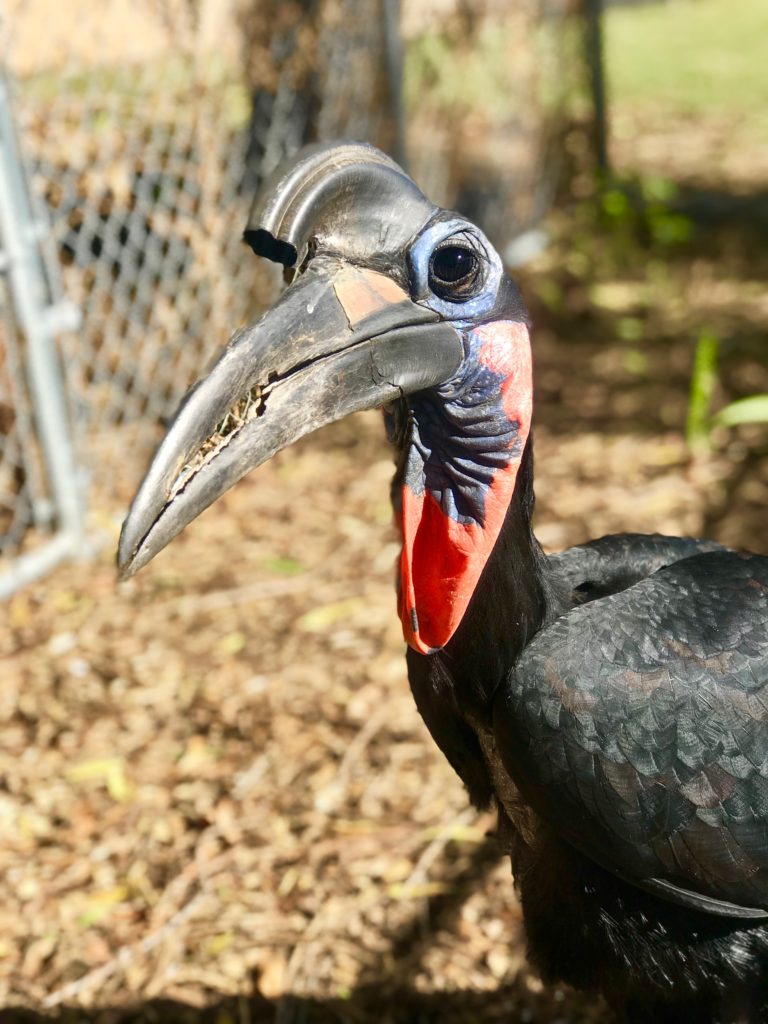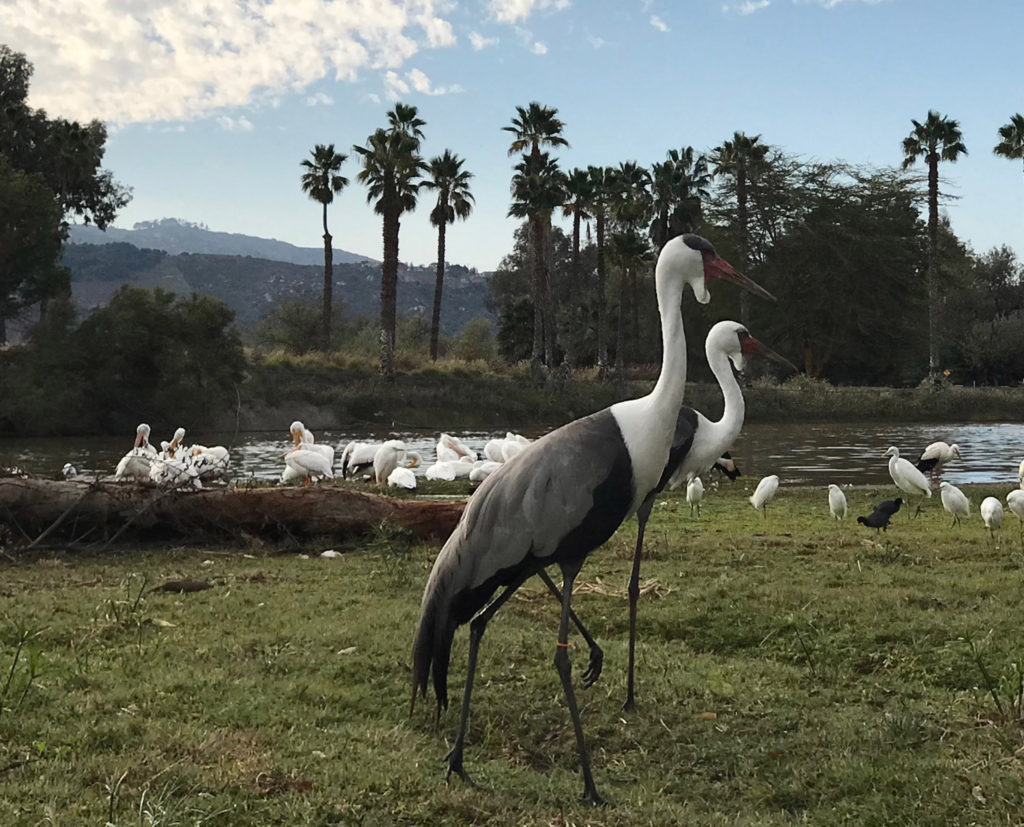
Have you seen the new Delta exhibit? In September of 2018, the San Diego Zoo Safari Park Bird Department introduced a brand-new exhibit called the “Delta.” The large, acre exhibit gets its name from the way several streams of water come together meeting at the East Pond, making it one of our most natural and unique exhibits. You can see it from the Africa Tram Safari; watch for it on your right-hand side after passing the cheetahs. It is also partly visible along the S-curve as you make your way from the cheetah exhibit to lesser flamingos. Inhabiting the exhibit, you will find West African black crowned cranes, European white storks, wattled cranes, Abyssinian ground hornbills, and several native San Diego birds, such as American white pelicans and double-crested cormorants.

As you stroll the Park, you may notice that a few of our guest-favorite birds are no longer where they once lived. The West African black crowned cranes that once lived near the front entrance are among of the many new inhabitants of the Delta. These cranes have raised several chicks on display over the years, and our guests enjoyed watching them grow and thrive. However, we decided it was in the best interest of the birds to give them a much larger space. The cranes are enjoying the open space, streams and constant enrichment the Delta exhibit has to offer. Keep an eye out for nest building from these two, as they are already scoping out the exhibit for the best nest spot. Now at the Park entrance, you will find trumpeter swans, a species that can take advantage of the entire exhibit and are part of an important conservation breeding program.
Another fan favorite is the Abyssinian ground hornbills, Tomba and Johari, who previously were found along the African Outpost trail. They are now living their very best life in the Delta! The pair are constantly on the move, exploring every part of their new exhibit; cultivating the soil in search of bugs, gophers, and moles; finding the best perches to spend their time sunning on, and interacting with the other birds with whom they now share their home. Everything in the Delta is novel and enriching to this charismatic pair, and they could not be happier in their new home. Meanwhile, their previous spot is now home to three young Ruppell’s vulture’s and a pair of brand-new lappet-faced vultures that are definitely worth checking out.

There are a total of five European white storks, tall white birds with black flight feathers, living in the Delta. These five siblings were the first successful European white stork chicks to hatch out at the Safari Park! The siblings stay close together and absolutely love fishing in the stream and pond for tiny fish, a new and unique opportunity they have in this natural space. European white storks are known for the very large stick nests they build on elevated platforms near marshy wetlands. Their new home is a perfect representation of the type of habitat where you would find these beautiful birds in the wild.

Finally, you will find two more very tall birds strutting around in the Delta—the wattled cranes. At a height of 5.5 feet (taller than their keeper!) the wattled cranes are listed as a Vulnerable species overall on the International Union for Conservation of Nature (IUCN) Red List of Threatened Species, but are listed as Critically Endangered in South Africa. This particular type of crane has proven to be a challenging species to breed in managed care. The staff at our Bird Breeding Complex (BBC) have taken on the challenge of artificial insemination (AI). The younger of the two birds, hatched out in March of 2018, was the first successful result from AI with wattled cranes, and the first chick from this particular female: a huge success for our BBC team and the Safari Park!
Be sure to catch a ride on the Africa Tram Safari on your next visit, and check out this beautiful new habitat and its incredible inhabitants.
Jenna Duarte is a senior keeper at the San Diego Zoo Safari Park.




